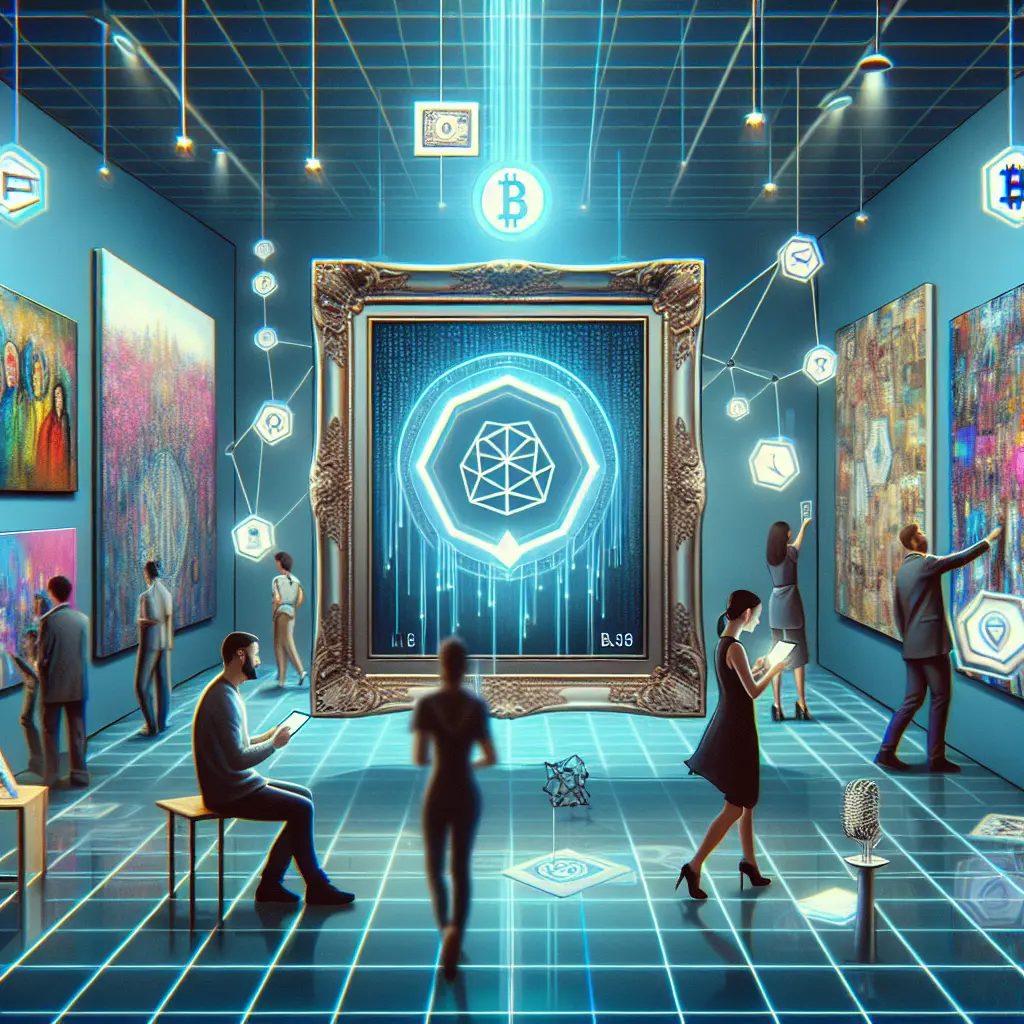
The rapidly evolving digital marketplace is a spectacle of innovation and creativity, especially with the rise of Non-Fungible Tokens (NFTs). These digital assets, which are unique and cannot be replicated, are revolutionizing the way we perceive and engage with art. Today, the realms of blockchain technology and digital art have intersected to create a vibrant ecosystem of NFT marketplaces, tokenized art, and virtual art galleries.
Transformation Through NFTs Digital Art
NFTs stand as a groundbreaking fusion of technology and creativity, offering digital artists a platform to tokenize their creations and sell them as one-of-a-kind assets on various NFT platforms. The Ethereum blockchain, primarily, has been pivotal in this transformation, providing a secure framework through smart contracts. These contracts automatically execute transactions and verify ownership without the need for a central authority, thereby reinforcing digital ownership and trust in the NFT marketplace.
In recent developments, an intriguing instance of NFTs digital art making waves in the market is Andy Warhol's digital portrait of Debbie Harry from 1985, created on a Commodore Amiga computer. This rare piece hit the market with a staggering $26 million USD price tag (source). The sale not only underscores the significant value attributed to digital collectibles but also highlights the seamless blend of historical artistry with modern technological formats.
NFT Trends and Cultural Commentary
The cultural realm is also echoing the NFT phenomenon. An episode from the latest season of 'Futurama' humorously critiqued the NFT craze, indicating mainstream media's acknowledgment of NFTs’ pervasive presence (source). This kind of integration shows how deeply embedded NFTs have become in popular culture, shaping discourses and narratives around modern art and technology.
The Future Art Releases and Political Figures Joining the Fray
Looking forward, the digital art sales market anticipates exclusive releases that will only be accessible decades from now. Amanda Mannen hints at this future trend where works by renowned artists are held back for future release, creating a suspenseful allure around digital art pieces (source).
Moreover, political figures such as Donald Trump are making entries into the NFT space. Trump’s announcement of his fourth NFT collection ties the political sphere directly to digital collectibles, illustrating the diverse penetration of NFTs across various fields (source).
Web3 and Traditional Brands
The potential of Web3 is becoming increasingly apparent as traditional brands explore its implications beyond mere digital collectibles. The integration into virtual realities and metaverses is setting the stage for a new era where digital and physical realities merge or coexist seamlessly (source).
Innovative Design Perspectives from South Korea
From a design perspective, Teo Yang’s approach in South Korea illustrates how tradition can inform future innovations in the digital space. His work suggests a harmonious blend of historical elements with futuristic digital concepts, enriching the digital art narrative (source).
Legal Challenges and Investments
The legal landscape around NFTs is also evolving. Recent lawsuits against the U.S. Securities and Exchange Commission (SEC) by artists seeking clarity on NFTs’ classification underline the growing need for regulatory frameworks that understand and accommodate the unique nature of NFTs (source).
As high-net-worth individuals look towards alternative investments amid economic fluctuations, digital art emerges as a viable option. The evolving landscape of art investment in 2024 reflects a robust interest in NFT investments as secure and lucrative opportunities (source).
Bridging Art and Blockchain
The 'Do The Woo Community' initiative exemplifies efforts to bridge art with blockchain technology. By bringing certification and verification to art pieces through blockchain, they enhance authenticity and value of digital art (source).
Conclusion
As we navigate through these dynamic changes, it is clear that NFTs are more than just a trend; they are here to redefine and reshape the art market. They democratize art ownership, provide artists with direct revenue streams, and introduce collectors to a new age of digital collectibles.
From virtual galleries that offer immersive experiences to tokenized artworks that ensure security and exclusivity, the landscape of digital art is being redrawn by NFTs. As we continue to witness this transformation, it becomes imperative for artists, investors, and enthusiasts to understand and engage with this burgeoning domain actively.
Authored by Curtis Blake, a fervent observer and commentator on how technology morphs art into new forms of expression.
Stay tuned to explore more about how these intersections of technology and creativity craft new realities.